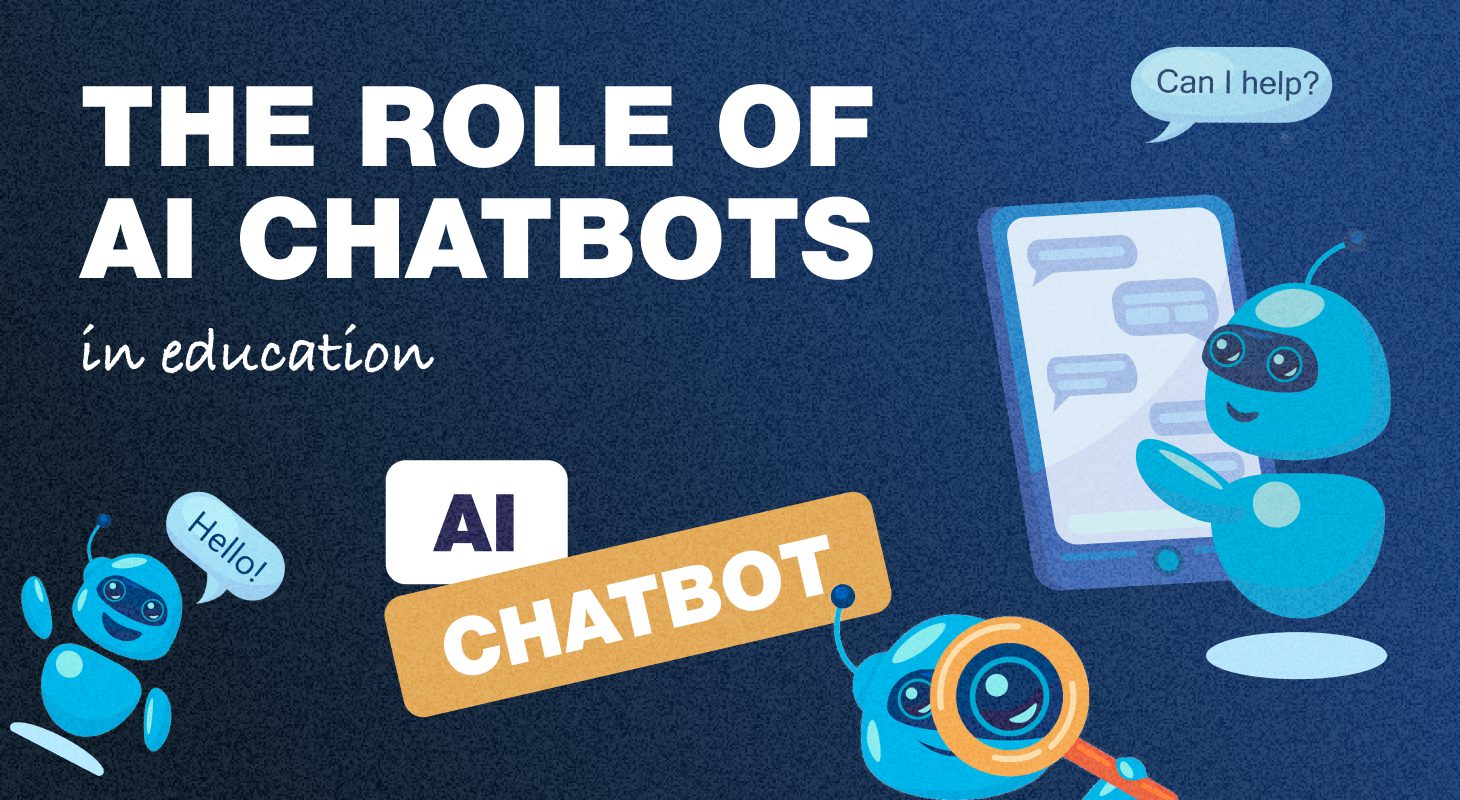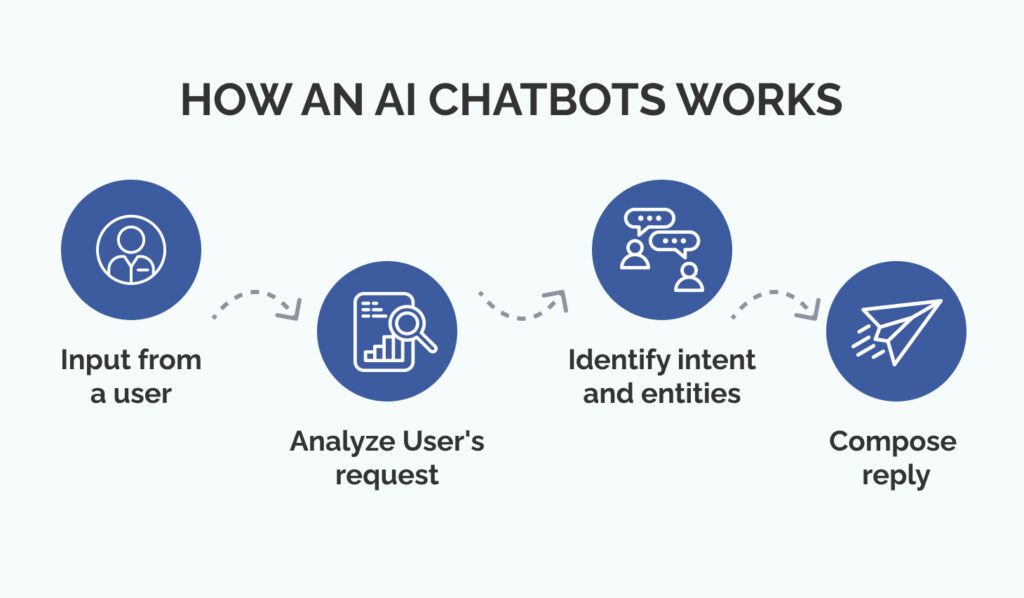AI Chatbots in Education: Implementing for LMS
 SmartApp
SmartApp
Exploring the technology behind AI chatbots
AI chatbots boast Natural Language Processing capabilities, allowing them to understand and respond to human language nuances. This fosters seamless and natural interactions within educational platforms.
The backbone of AI chatbots lies in machine learning algorithms, enabling them to adapt and respond dynamically to user interactions. This creates a personalized learning journey for each student.
Integration with APIs connects chatbots to external systems, accessing real-time data and additional functionalities. Context awareness empowers chatbots to understand and remember conversation context, yielding more nuanced responses.
Understanding the technology behind AI chatbots involves a synergistic integration of these components, creating intelligent, responsive, and adaptable conversational agents that cater to diverse user needs across different domains.

How an AI chatbots works
Why your educational platform needs an AI chatbot
1. Personalized Learning Journeys
Imagine a learning experience tailored just for you. AI chatbots analyze individual student needs, adapting lessons to suit diverse learning styles. It’s like having a personal tutor available 24/7. By customizing content and pace, students can grasp concepts at their own speed. Consequently, this adaptive strategy enhances engagement and understanding.
2. Instant Support and Feedback
We live in the global economy where companies must serve customers during many time zones. At the same time customers expect fast responses at night and on weekends. 32% of consumers expect a response within 30 minutes through social media channels. 57% of consumers expect the same response time at night and on weekends as during normal business hours. AI chatbots provide real-time assistance and automated grading, ensuring students receive instant support and constructive feedback, promoting continuous improvement.
3. Enhancing Student Engagement
The introduction of gamification elements makes learning exciting, increasing student interest and participation in the educational process. The interactive nature of chat interactions fosters a dynamic learning environment, where students actively participate in their educational journey.
4. Adaptive Learning Based on Individual Student Needs
Adaptive learning caters to each student’s needs, making education more personalized. It uses data to customize lessons, making sure they match how each student learns. This approach boosts engagement and understanding, creating a student-focused environment. Overall, adaptive learning improves education by tailoring it to individual needs and making the learning process more effective.
5. Tailoring Content Delivery for Diverse Learning Styles
Recognizing diverse learning styles, AI chatbots ensure content delivery that resonates with each student’s preferences, making the educational journey more effective and enjoyable.

Key use cases of chatbots in education
Challenges and Considerations
Implementing AI chatbots in educational platforms holds tremendous promise, but it is not without its share of challenges and considerations. As we navigate the evolving landscape of educational technology, it is crucial to address these aspects to ensure a seamless integration that truly enhances the learning experience.
- Data Privacy and Security
The collection and storage of sensitive student data are significant concerns when deploying AI chatbots in education. Institutions need strong security measures to protect personal information and follow data protection rules. Establishing clear guidelines on data access, storage, and retention is essential to build trust among students, parents, and educators.
- Ethical Use of AI
Ensuring that AI chatbots provide unbiased and fair interactions is crucial to prevent reinforcing existing prejudices. Developers must continually monitor and assess the algorithms to minimize the risk of unintentional bias and discriminatory behavior. Transparent AI decision-making processes are key to building trust within the educational community.
- Customization and Personalization
While personalization is a strength of AI chatbots, striking the right balance is crucial. Overly personalized experiences may lead to students receiving a limited range of perspectives. Striking a balance between tailored content and exposure to diverse ideas is a challenge that developers and educators must navigate to ensure a holistic learning experience.
- Integration with Existing Systems
Many educational institutions already have established learning management systems (LMS) and other technology infrastructures. Integrating AI chatbots seamlessly with these existing systems can pose technical challenges. Compatibility issues, data synchronization, and interoperability should be thoroughly addressed during the implementation phase to avoid disruptions to the learning environment.
- User Acceptance and Training
The successful adoption of AI chatbots in education relies heavily on user acceptance. Students, educators, and administrators need to be comfortable with the technology. Providing comprehensive training and support is crucial to ensure that all stakeholders can leverage the full potential of AI chatbots effectively. Resistance to change and lack of understanding can impede the successful integration of these tools.
- Maintenance and Updates
The rapid pace of technological advancement means that AI chatbots require constant maintenance and updates. Educational institutions must allocate resources for ongoing technical support, updates, and improvements to ensure the chatbots remain effective and aligned with evolving educational goals.
- Monitoring and Evaluation
Continuous monitoring and evaluation are essential to measure the effectiveness of AI chatbots in achieving educational objectives. Gathering feedback from users and making data-driven adjustments ensures that the technology evolves to meet the changing needs of the educational community.
Chatbot Implementation
Developing AI chatbots for eLearning involves thorough research since they differ significantly from basic Q&A bots.
1. Defining goals
You need to decide what tasks your chatbot should perform and what problems it should solve based on the core needs of your management, teachers, and students.
2. Searching for a development team
Developing an eLearning bot with artificial intelligence requires programming knowledge, careful planning and strategy. To put your ideas into practice quickly and professionally, you can use the services of a development team. Contact us and receive quality services, including consultation, development and post-launch support.
3. Development
We will choose a chatbot development platform that matches your requirements, tailor interface and functionalities to match the LMS design and ensure a user-friendly and intuitive experience. Next, we will seamlessly integrate the bot with the LMS infrastructure and establish secure data exchange protocols.
4. User Training
When introducing new technology into teaching, it is necessary to train users, including teachers and students, on how to interact with the chatbot. Explain the value and benefits of AI-enhanced learning. In the development process, it’s crucial to build an environment that users can easily grasp without much effort. You can read more about this here: Build and Empower your Moodle LMS for Compliance Trainings.
5. Support
After implementing a chatbot, you need to use user feedback to improve the functionality and effectiveness of the chatbot. Resolving any issues in a timely manner will help maintain a positive user experience.
The future of AI chatbots in education
The future brings exciting possibilities as AI chatbots evolve and integrate with emerging technologies. This shapes the next generation of educational experiences. Collaboration between AI chatbots and human educators becomes key. Educators need preparation for a tech-infused teaching environment that improves the overall educational experience.
The ongoing integration of these intelligent virtual assistants in classrooms worldwide marks a new era of personalized, engaging, and accessible learning experiences. As technology advances, so will the capabilities of AI chatbots, enriching the educational journey for students and educators alike.
Ready to embark on the future of education? Contact us today to explore how AI chatbot solutions can transform your educational platform, making learning an exciting adventure for students and educators alike.
Subscribe to my newsletter
Read articles from SmartApp directly inside your inbox. Subscribe to the newsletter, and don't miss out.
Written by
